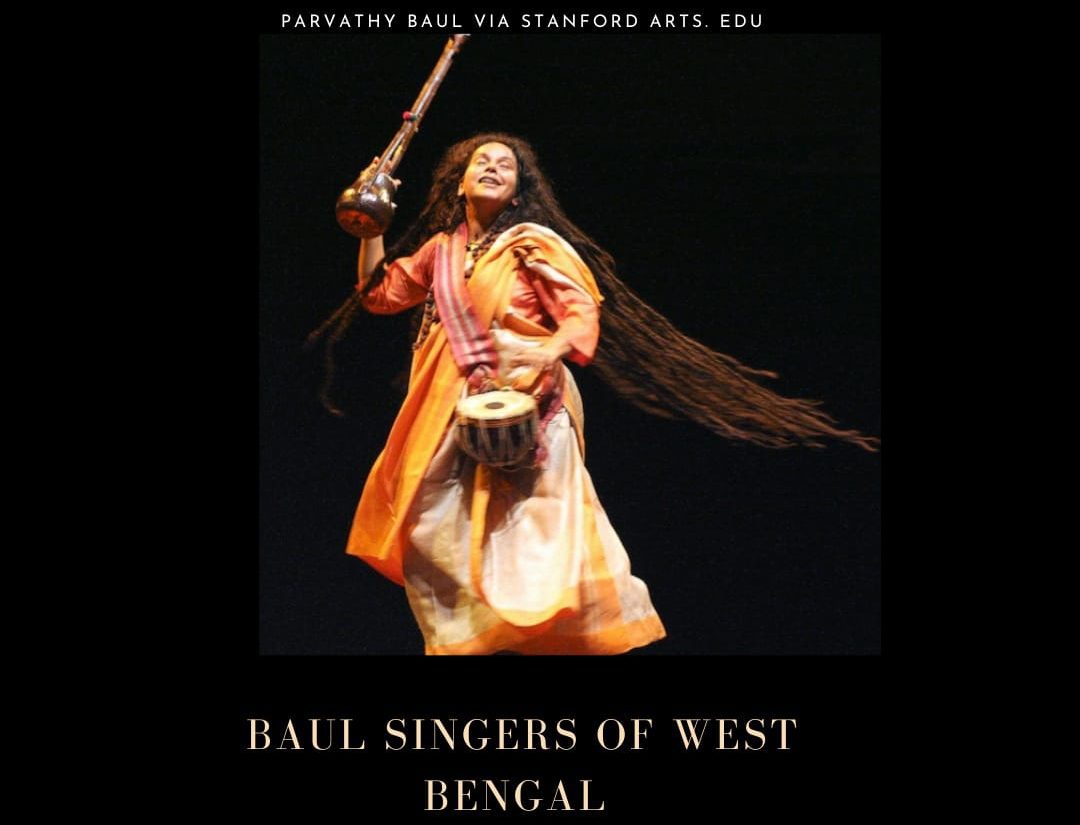
Article by EIH Researcher and Writer
Anupam Tripathi
The true culture of people lies in their customs, folk dances, folk traditions, traditional beliefs and folk songs. No country in the world is an exception. We can easily compile a cultural history of a specific class of people after studying their customs, traditions, folklore, dances and songs. Invariably all communities have this great richness of their immaterial culture, which is expressed at the time of their feasts or festivities. India is a vast country that has a rich treasure of folk songs which obviously manifest the culture of the various communities that inhabit this vast land.
The word “baul” has its origin in the Sanskrit words “vatula” (mad) or “vyakula” (restless) and is used to describe someone who is “obsessed” or “mad”, mad about his frantic quest for god in this world. Originally, the Bauls were simply nonconformists who rejected traditional social norms to form their own sect that worshipped music as their religion. “Baul” is also the name of the genre of folk music (Baul-gan) developed by this cult. Originally, Birbhum District in West Bengal was the seat of all Baul activities. Baul rule later extended to Tripura to the north, Bangladesh to the east, and parts of Bihar and Orissa to the west and south respectively. Their members come from both Hindus (mainly Vaishnavites) and Muslims (usually Sufis or mystics). Their songs are often about the love between the human and a personal god living within the individual. It easy to identify a Baul singer by his uncut hair( often coiled), his saffron robe (alkhalla), a beaded necklace made from basil stems (tulsi) and of course, the one-stringed one guitar (Ektara). Sometimes, when Baul sings in a group, he also uses other instruments, such as “dotara” (a multi-stringed instrument made from the wood of a jackfruit or neem tree), “dugi” (a small earthen hand drum), or leather instruments, like “dhol”, “khol” and “goba”, sound instruments like “ghungur”, “nupur”, small cymbals called “kartal” and “mandira” and the bamboo flute. Not much is known about its origins, although it is argued that the cult of the traveling musicians dates back to the 9th century AD. Bangladesh’s Baul tradition was inscribed on UNESCO’s list of Masterpieces of the Oral and Intangible Heritage of Humanity in 2005. They sing with their hearts and express their feelings and emotions in their songs, but they never bothered to write their songs down, as theirs was mostly an oral tradition. In their songs, the Bauls express their religious beliefs and experiences, vision of life and of the world. The songs are in 3/4 or 4/4 simple time. The melody usually consists of two movements, the same melodic pattern used for all stanzas of the poem. Unlike folk songs from other parts of India, which are usually pentatonic (musical scale with 5 notes per octave), Bengali folk songs are often heptatonic (7 notes per octave); and often span two octaves. Baul songs are no exception to this tradition; however, although they fall under the general category of Bengali folk music, they have a very individual style that sets them apart. The Bauls have to be initiated by a guru and perform many rites and rituals to acquire spiritual attainments or salvation. Thus Lalan Fakir sings:
Guru, put good thoughts into my mind
So that I do not forget you.
Guru, the person to whom you show no mercy
Is always beset with evil thoughts.
You are the charioteer of my heart’s chariot;
I go wherever you drive me.
Guru, you make from me the strings,
Guru, you make from me the music,
Guru, you make from me the instrument;
If you do not play upon me, how can I sound?
My mind’s eye has been blind from birth;
You are ever conscious.
I will see your feet, says Lalan hopefully,
Put the salve of knowledge into my eyes.
Lalan Fakir (1774-1890), one of the greatest Bauls, is said to have continued to compose and sing songs for decades without ever stopping to correct or put them on paper. It was only after his death that people thought about collecting and compiling his rich repertoire. The Bauls live as a community and their main occupation is the dissemination of Baul music. They are the most non-communal of all communities: As a group, they have no formal religion, for they only believe in the religion of music, brotherhood, and peace. The Baul philosophy is predominantly a Hindu movement and also combines various Islamic and Buddhist currents. The main features of Baul’s religious beliefs and practices can be classified as follows:
- Guru-vāda , the importance of the teacher.
- Total rejection of all social and religious precepts of established systems, traditions of caste, class and race, as well as the Vedas and Puranas.
- Maner- mānus (man of the heart), i.e., the divine in Man.
- Conception of the human form as abode of the Divine and as a microcosm.
- The physical and psychological process of sadhana (discipline) to attain spiritual perfection.
Bengal’s greatest poet the Nobel laureate Rabindranath Tagore wrote about the Bauls:
“One day I chanced to hear a song from a beggar belonging to the Baul sect of Bengal…What struck me in this simple song was a religious expression that was neither grossly concrete, full of crude details, nor metaphysical in its rarefied transcendentalism. At the same time, it was alive with an emotional sincerity, it spoke of an intense yearning of the heart for the divine, which is in man and not in the temple or scriptures, in images or symbols… I sought to understand them through their songs, which is their only form of worship.”
Reference
- Arundhati Tagore, Bengali Baul Songs.
- Josef Kuckertz, Origin and Construction of Melodies in Baul Songs of Bengal.
- Rajeshwari Dutta, The Religious Aspect of the Baul Songs of Bengal.
- https://asiainch.org/craft/baul-singer-of-west-bengal/
- https://www.learnreligions.com/the-bauls-of-bengal-1769990


















